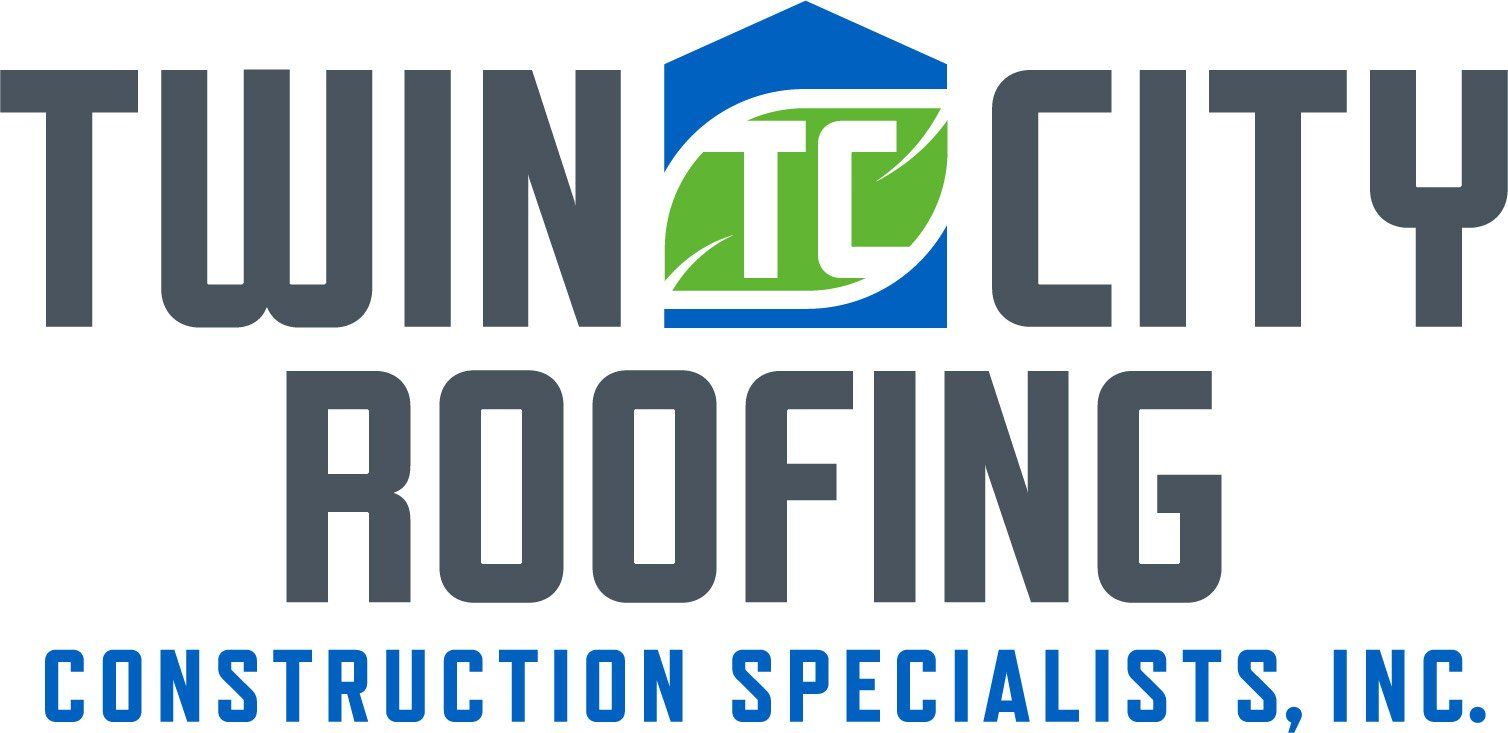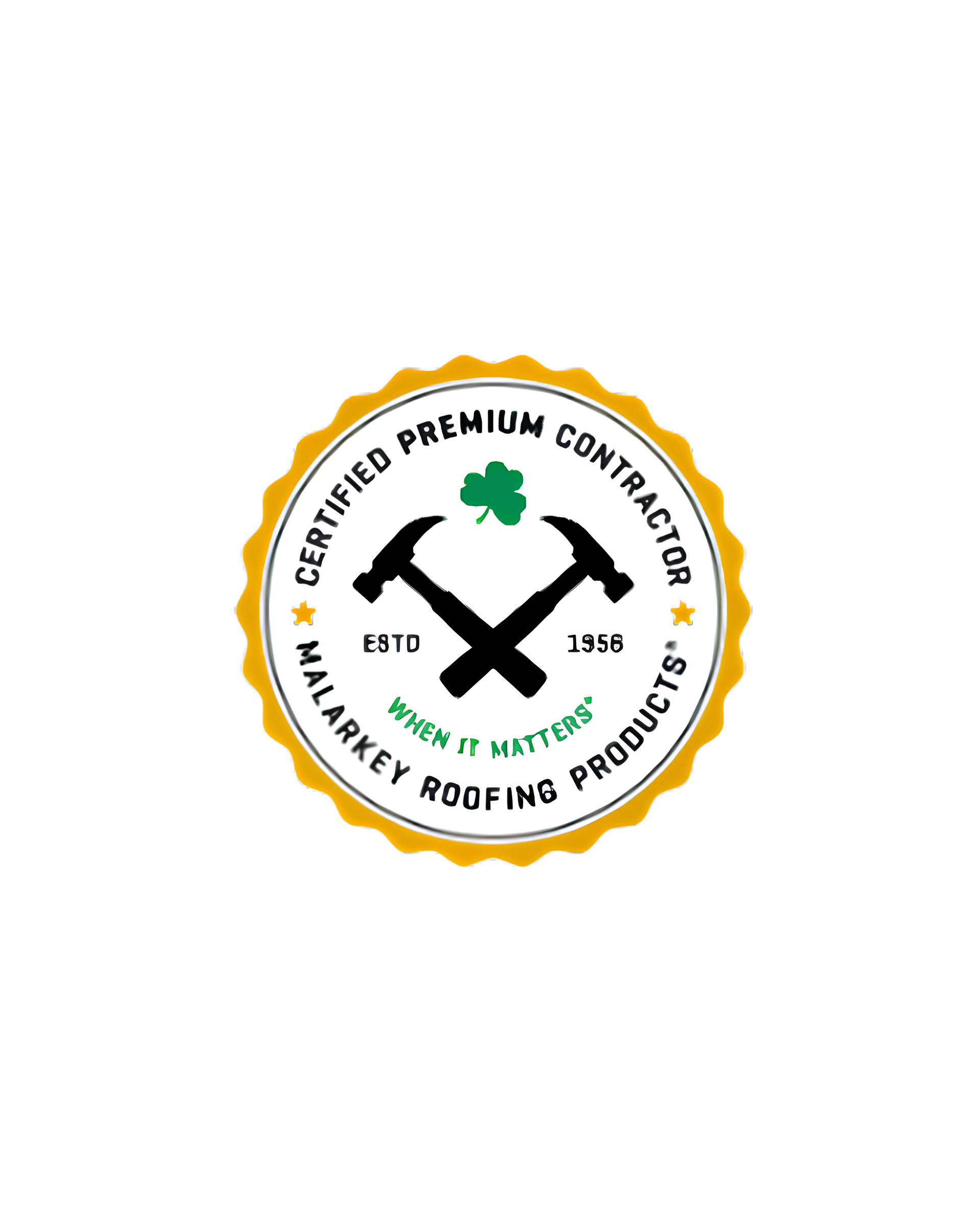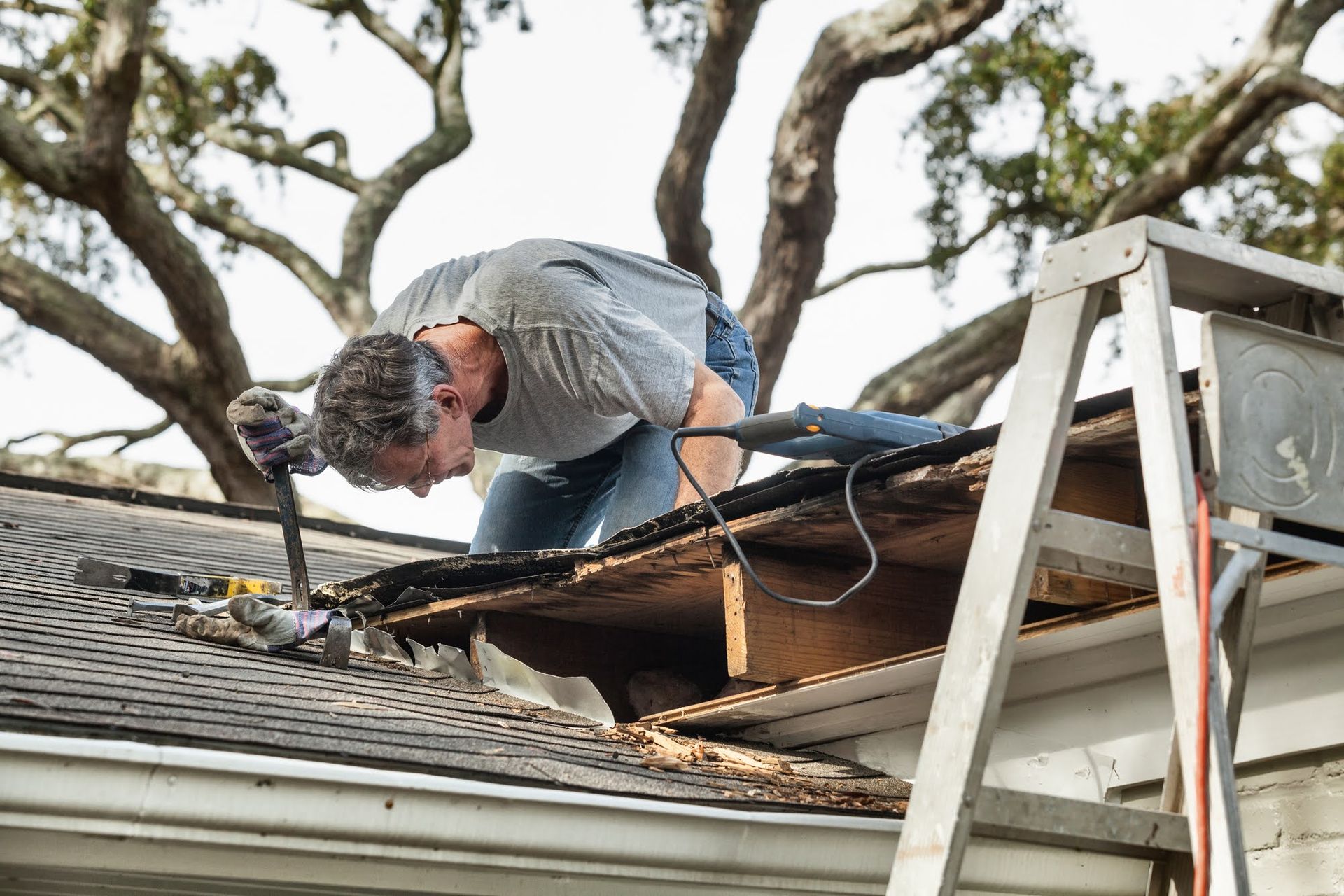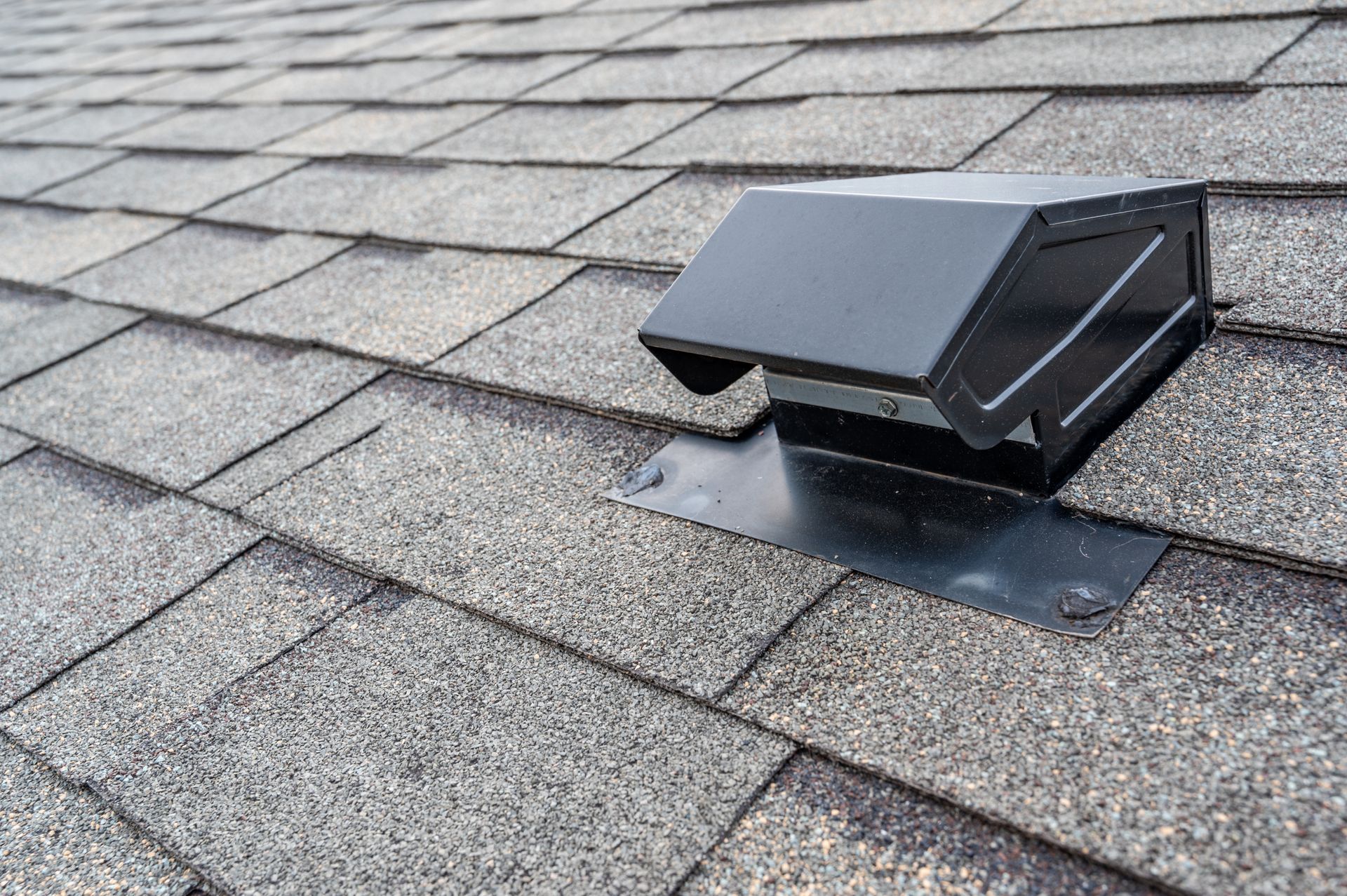Why Minnesotan's Are Putting On Class 4 Impact-Resistant Shingles

I have been in this industry for about a year and a half now, and one thing is for certain: class 4 impact-resistant shingles are the new norm.
If you are unfamiliar with the term “class 4”, I don’t blame you. Roofing is boring, it’s an afterthought for homeowners. It only comes to mind when you start seeing your street filling up with yard signs or a brown spot on the ceiling in your living room from a leak.
Since you’re reading this, you’re more than likely shopping around for a new roof. Calling contractors, scheduling those free inspections, and ultimately receiving estimates. Your eyes stumble across an upgrade option to a “Class 4 Impact-Resistant Shingle”. The thought crosses your mind: “What does this mean?”
Impact resistant shingles are marketed to homeowners to be the most durable shingle on the market. They’re designed to withstand the harshest weather mother nature can provide.
Hail and wind are enemy #1 for your roof. In Minnesota, we are no stranger to these events. According to the National Centers for Environmental Information, Minnesota has had 36 severe storms that have caused over a billion dollars’ worth of damage.
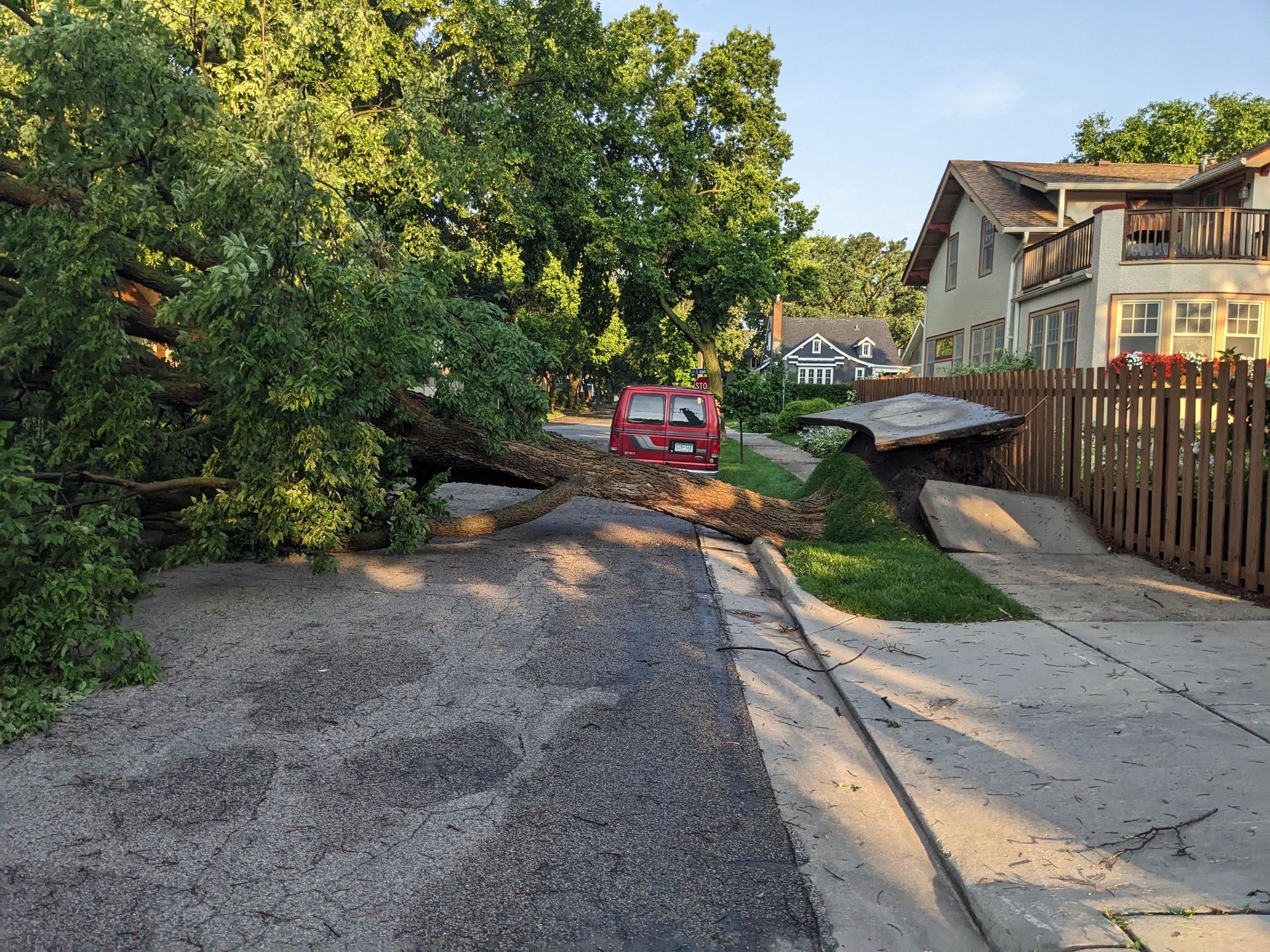
The most recent severe storm that rolled through the Twin Cities last month brought 70 mph winds, resulting in downed trees. Xcel Energy, the local energy provider for most of Minnesota reported that 135,000 customers suffered a power outage.
We can't talk about Minnesota's severe storms without talking about May of 2022. According to the Minnesota Department of Natural Resources, May of 2022 had six calendar days with severe weather including hail, tornadoes, and wind.
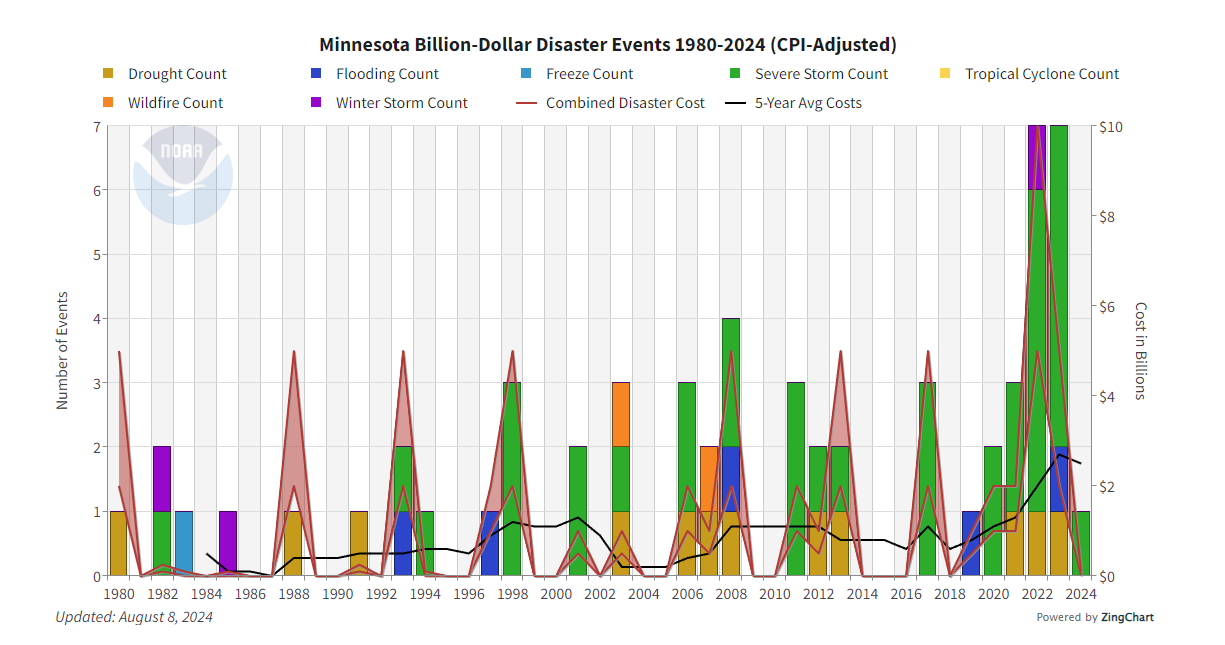
As you can see, Minnesota is no stranger to severe weather events. In recent years, the number of severe weather events has skyrocketed compared to recent history. Homeowners aren’t the only ones to take notice of this trend of severe weather lately, insurance companies have as well.
The trend of severe weather is pushing insurance companies out of “high-risk” areas. According to the Star Tribune, insurance companies operating in Minnesota have lost money in 6 of the past 7 years. Ultimately as time goes on, you will see insurance companies leaving our area, as well as insurance companies tactically adjusting your policy.
Thankfully Minnesota has made insurance companies discount homeowners policies who install products to protect their homes. Thus, we make it back to the topic at hand, the class 4 Impact Resistant shingle.
Shingle manufacturers can’t just slap “impact resistant” on their products, the shingles have to be put through testing. The most notable test, which the insurance company uses to give homeowners a discount, is the UL 2218 test.
“UL” is short for Underwriters Laboratory. In simple terms, UL tests products, and those tests are standards for numerous purposes. UL 2218 is a test for shingles, to identify what class they fall into.
The actual test itself is quite simple. To replicate hail as much as possible, UL uses a steel ball of different diameters (or classes) and drops them at different heights onto a shingle. There are 4 different-sized steel balls: class 1 is a 1.25in. ball, class 2 is a 1.5in. ball, class 3 is a 1.75in. ball, and finally class 4 is a 2in ball. The shingles are classified as one of the classes if they can withstand that certain-sized ball. It’s important to remember that the steel balls are dropped at different heights to create as much velocity as a real hailstone would have during a severe storm.
There is an outstanding report from the Institute for Business & Home Safety that summarized findings of their own of the UL test. One thing was clear, impact-resistant shingles are better at withstanding hail impacts.
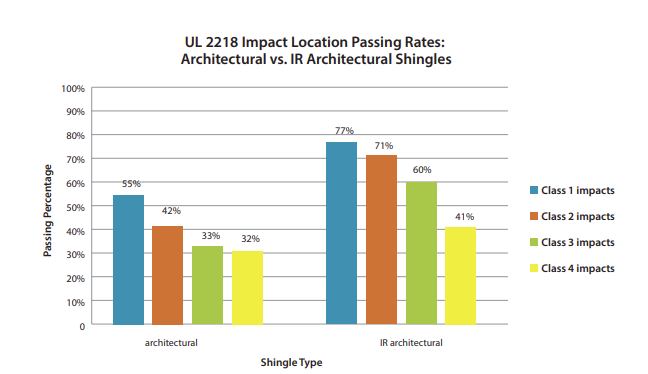
As you can see in the graph above, shingles with the impact-resistance stamp put up a better fight than standard shingles. At Twin City Roofing, our shingle of choice is the Malarkey Vista.
The Malarkey Vista is a class 4 impact-resistant shingle, but it's different from other IR shingles. Malarkey utilizes polymer-modified asphalt in their shingles. Polymer

